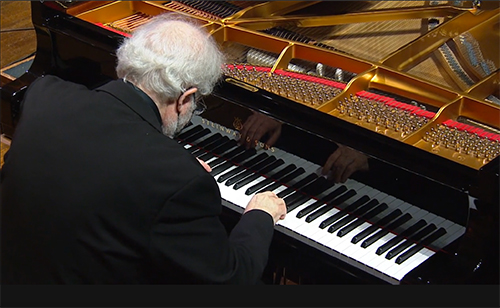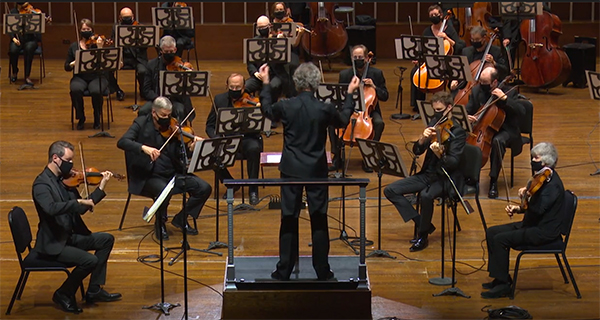by Daniel Hathaway

Thus the third “In Focus” performance by The Cleveland Orchestra that debuted on the Adella platform on November 12 lasts only 54 minutes from stem to stern, including a conversation between Emanuel Ax and Orchestra cellist Martha Baldwin, and features only two highly contrasting works led by music director Franz Welser-Möst. The performances continue to be available on the Adella platform until March.
Ax is the lucid and elegant soloist in Haydn’s Piano Concerto No. 11 in D, giving not a hint of having been furloughed from performing for half a year by the novel coronavirus. Neither do the orchestra strings, who play with lean yet warm tone and fine precision from individual music desks spread evenly across the Severance Hall stage.
Although the concerto is scored for pairs of oboes and horns, wind players — who traffic in aerosols — are still not invited to the party.
Audiences like to see a soloist’s hands, and video actually improves that experience. A variety of camera angles and tight shots in this performance give a ringside view of Ax’s fingers and his efficient digital technique.
Bartók’s Divertimento for Strings takes the program into a different world — one that tips the hat to the Baroque concerto grosso with its alternation between solo instruments and ensemble, but puts new flesh on its bones.
Rhythmically complex as it is light in spirit, the work requires the kind of ensemble sense that is The Cleveland Orchestra’s specialty — even when physically distanced. Welser-Möst leads a thrilling performance of the opening allegro, a chilling reading of the dark slow movement, and a witty account of the Hungarian Rondo that mutates its tune every time it comes around.
In the latter, concertmaster Peter Otto makes a fine moment out of the Hungarian fiddler’s cadenza, and the Orchestra has great fun with the parody of a Viennese polka that pops up toward the end.
Published on ClevelandClassical.com November 24, 2020
Click here for a printable copy of this article






